
views
Planning Your Motion

Read your relevant rules of civil procedure. There are many reasons why you might think the judgment should be set aside. However, only some of those reasons will be legal. Essentially, you can get a judgment set aside if you didn’t have a fair chance to present your case. You should read your rule of civil procedure to identify potential reasons for setting aside a judgment. In federal court, Rule 60 of the Federal Rules of Civil Procedure applies to motions to set aside court judgments. You can find the rule online. Your state court will have a different rule. You can find your state’s Rules of Civil Procedure and read them. Most states have published their rules online.

Identify your reasons for bringing the motion. After reading the relevant rule, see if the rule applies to your situation. For example, in federal court, you can file a motion to set aside judgment for the following reasons: Mistake, surprise, excusable neglect, or inadvertence. For example, if your lawyer made a decision without your authority to do so, then you might be able to set aside the judgment. Newly discovered evidence has come to light, and you could not have discovered it in time to ask for a new trial. Fraud, misrepresentation, or misconduct. For example, the other side bribing the judge or juror would be fraud. Also, refusing to turn over evidence during “discovery” would also constitute fraud. The judgment is void. For example, the court might not have had subject matter jurisdiction over the case. The judgment has already been satisfied. For example, you paid off a debt before the plaintiff got a judgment based on the debt. The judgment is based on an earlier judgment that has been reversed or vacated. Any other reason justifying relief.

Check the deadline for filing. You might be limited as to when you can bring your motion to set aside a judgment. Read your Rules of Civil Procedure. For example, in Nevada, you can only bring this motion on the following timeframe: You have six months if you are claiming mistake, surprise, inadvertence, or excusable neglect. You have six months if you are claiming the other side committed fraud, misrepresentation, or other misconduct. You have a “reasonable” amount of time if you have already satisfied the judgment, or the judgment was discharged or released. You have six months if you were never personally served with a summons or complaint.

Get evidence to support your motion. The judge probably won’t agree to set aside the judgment unless you can come forward with some proof to back up your argument. For example, if you think the other side bribed a juror, then you will need a signed affidavit from the juror to that effect. If new evidence has come to light, then get a copy of the evidence or prove its existence in some way. If the judgment was based on a prior judgment that has been reversed on appeal, then get a copy of the court’s opinion reversing the prior judgment.

Meet with an attorney. Motions to set aside a judgment are rarely granted, and you would benefit from meeting with an attorney to discuss the motion. The attorney can listen to you describe your situation and then offer expert advice tailored to your circumstances. To find an attorney, contact your local or state bar association and ask for a referral. If you had an attorney in your original case, then you could reconnect. Call and schedule a meeting. Ask ahead of time how much the attorney charges.
Drafting Your Motion

Format your document. You should format the motion in the same way that you formatted other motions in your case. If you’ve never filed a motion, then get a copy of the judge’s rules. Most judges have local rules which will describe the format of your motion. Generally, you can make the motion double-spaced, 14 point Times New Roman or Arial. In some courts, you also must use “pleading paper,” which is paper numbered down the left-hand margin. Your court might have printed, “fill in the blank forms” for you to use, particularly if the judge entered a default judgment against you because you failed to respond to the complaint and summons. Check with the court clerk.

Insert a caption. The caption is the header information that identifies the court, the parties, the judge, and the case number. You can find this information on any document filed with the court in your case. Don’t forget to title the motion. You can title it “Defendant’s Motion for Relief from Judgment Pursuant to Rule 60(b)” or something similar.
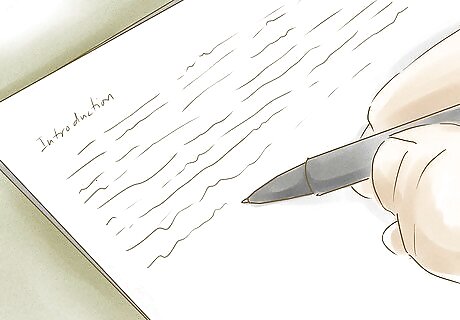
Add an introduction. The introduction should be very brief. You should identify yourself and ask the court to set aside the judgment. You should also state the date on which final judgment was entered against you. Find your copy of the judgment, which should have been mailed to you. If you can’t find it, then contact the court clerk for a copy. Sample language could read: “Defendant, Michael Smith, hereby moves the Court to set aside the judgment entered against him on April 22, 2016.”

Make your argument. The argument will be short and simple or detailed and long, depending on your circumstances. When making the argument, remember the following: Mention the rule that grants you the right to seek the motion. For example, you can write, “This motion is brought pursuant to Rule 60(b)(2) of the Utah Rules of Civil Procedure.” Support facts with an affidavit. For example, let’s say you failed to respond to a complaint in time because you were in a car accident and were recovering in the hospital. You should have an affidavit from an attending physician describing your injuries and your stay in the hospital. You should also draft an affidavit explaining the situation.

Add a conclusion. Your conclusion should be brief. You can simply repeat why you brought the motion and request that the judge grant it. For example, you could write: “For the reasons stated above, this Court should grant this Motion for Relief from Judgment Pursuant to Rule 60(b).”

Sign the motion. Below the conclusion, insert the words “Respectfully Submitted” and then a signature block. Underneath the signature put your name, address, phone number, and email address. Also state if you are representing yourself (“pro se” or “pro per”).

Attach a proposed order. In federal court, many judges want you to submit a proposed order along with your motion. Some state court judges might require the same. You should read your local rules to find out if a proposed order should accompany your motion. A proposed order would have the caption information on top, and then would state, “Having considered Defendant’s Motion and finding good cause therefore, IT IS HEREBY ORDERED that Defendant’s Motion for Relief from Judgment Pursuant to Rule 60(b) is GRANTED.” Beneath this language, insert a line for the date and a line for the judge’s name.
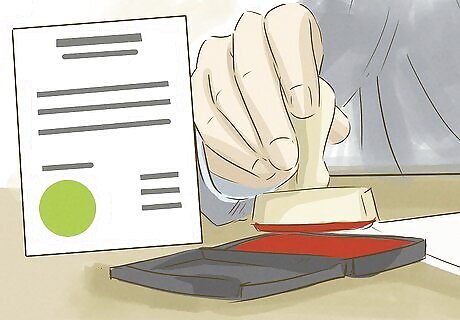
Attach a certificate of service. You have to give the other side notice that you are filing the motion, so you should include a certificate of service. This certificate will tell the court how you gave notice and who you gave notice to. A sample certificate could read: “I hereby certify that I mailed, certified mail, a true copy of this motion and attached affidavits to the opposing party, at the following address: [insert address].” Then insert a signature block and the date. Sign the certificate.

Compile exhibits or affidavits. Make sure to write your own affidavit and to get affidavits from people with relevant information about why you should get the judgment set aside. Make sure to mark the exhibits clearly, using exhibit stickers, which you can get from an office supply store. Be consistent in how you refer to exhibits. Mark the first exhibit “Exhibit A” and refer to it as “Exhibit A” in the body of your argument.
Filing Your Motion

Make several copies of your motion. You should make one copy for your own records. Also, you must serve a copy on the other side’s attorney. If you are filing electronically, then the electronic system usually notifies the other side that you have filed a motion. The court may also want one or more copies, so you should make a few more.
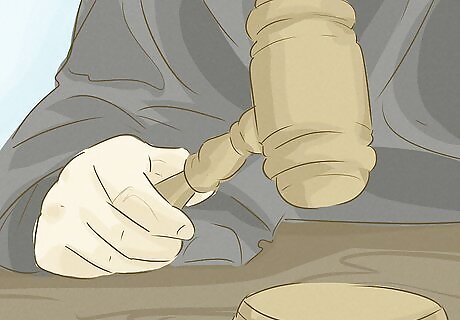
Set a hearing date. Each court sets hearing dates somewhat differently. Make sure not to set the hearing date too close to the date you filed the motion. Check your relevant Rules of Civil Procedure to see how much time must pass before you can have the hearing. You might have to fill out a Notice of Hearing form and send it along with a copy of your motion. Some printed “fill in the blank” motion forms have a section where you insert the date and time of the hearing.
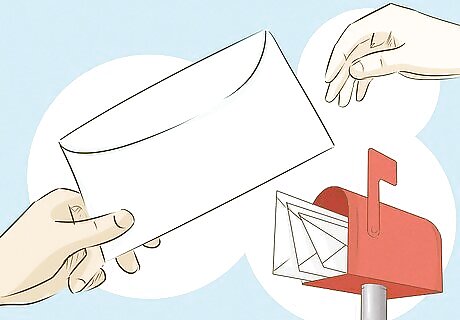
Send notice to the other side. Serve notice using the method stated in your certificate of service. You can generally mail notice of a motion using first class mail, prepaid postage, or you could use certified mail, return receipt requested. It’s probably best to use certified mail because the signed return receipt will serve as proof that the other side received notice of your motion.

File the motion with the clerk. You should file with the court clerk in the same manner that you have filed other documents in your case. Take the original and your copies to the court and ask the clerk to file. Have the clerk stamp your copy with the filing date. You might have to pay a filing fee, which will differ depending on the court. If you can’t afford the fee, then ask for a fee waiver form and complete it.










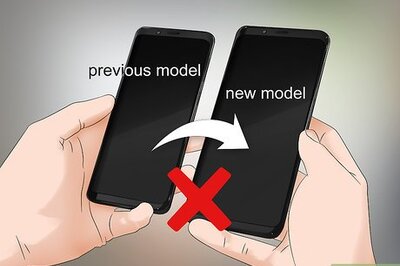









Comments
0 comment